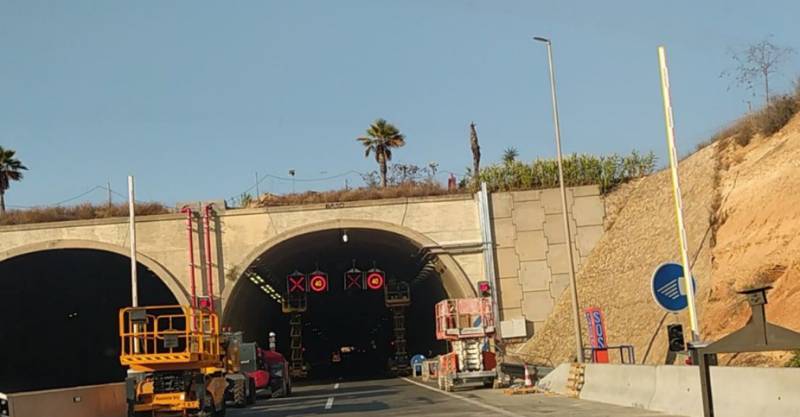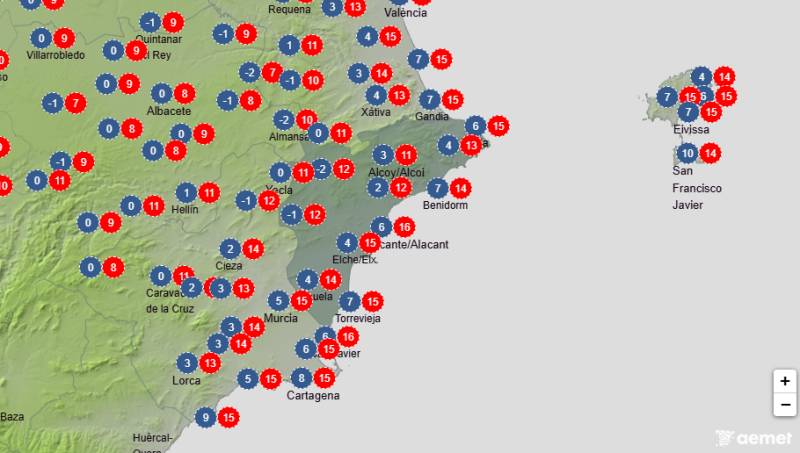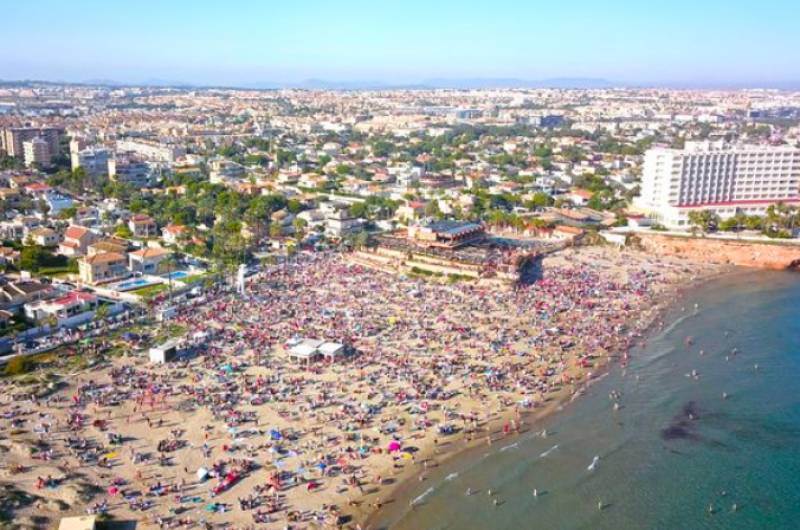
To be listed on the CAMPOSOL TODAY MAP please call +34 968 018 268.

Guidelines for submitting articles to La Manga Club Today
Hello, and thank you for choosing La Manga ClubToday.com to publicise your organisation’s info or event.
La Manga Club Today is a website set up by Murcia Today specifically for residents of the urbanisation in Southwest Murcia, providing news and information on what’s happening in the local area, which is the largest English-speaking expat area in the Region of Murcia.
When submitting text to be included on La Manga Club Today, please abide by the following guidelines so we can upload your article as swiftly as possible:
Send an email to editor@lamangaclubtoday.com or contact@murciatoday.com
Attach the information in a Word Document or Google Doc
Include all relevant points, including:
Who is the organisation running the event?
Where is it happening?
When?
How much does it cost?
Is it necessary to book beforehand, or can people just show up on the day?
…but try not to exceed 300 words
Also attach a photo to illustrate your article, no more than 100kb

A brief history of Orihuela
Orihuela has an extensive and interesting history
 From Prehistory to the Moors: the birth of Orihuela
From Prehistory to the Moors: the birth of Orihuela
Although it is widely accepted that the area of Orihuela must first have been inhabited by early hominids around 20,000 years ago, as other parts of the Alicante province and Valencia region hold significant remains from early prehistory, no physical evidence has yet been found to support this notion, and the first tangible proof of human habitation dates from the third millennium BC.
It was then, during the late Bronze Age and early Iron Age, that the settlement of Los Saladares was first populated by members of the Argaric culture, although the site was later taken over by the Iberian peoples. The settlement is located on a small hill just to the west of the Sierra de Hurchillo, three kilometers south of Orihuela itself and close to the district of Arneva, and most of the remains and relics discovered date from the latter period of its habitation, in the last millennium BC. It was first discovered in 1968 by some young boys who were looking for a place to play football!
The necropolis of San Antón, which lies within the Palmeral, also contains human remains from approximately the same period.
These first settlers certainly belonged to the Argaric culture, but the influence of the “Los Millares” culture (also from Almería) also extended this far north along the Mediterranean coast, spreading a society based first on cattle farming and later on mixed agriculture.
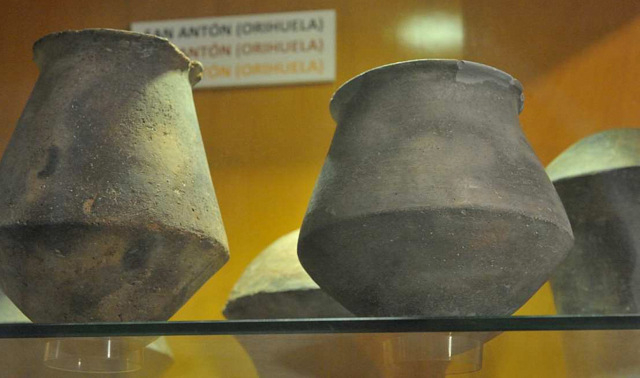 Between the years of 2200BC and 1550BC the Argaric Culture was present in what is now South - eastern Spain, the culture occupying multiple sites in the Region of Murcia, Almería, Granada, Alicante and Jaén. ( see Argarics in Murcia for full report about this culture)
Between the years of 2200BC and 1550BC the Argaric Culture was present in what is now South - eastern Spain, the culture occupying multiple sites in the Region of Murcia, Almería, Granada, Alicante and Jaén. ( see Argarics in Murcia for full report about this culture)
The Bronze Age denoted an era in which mankind had developed metallurgical skills which enabled him to build substantial settlements and change his method of farming from subsistence hunting and gathering to cultivating enough crops to feed a larger, static population. Advances in metallurgical technologies made the agricultural processes of production easier, and individuals were able to develop specialist skills, opening up the way for trade, social development and structure, territorial organisation and definition, emergence of funeral rites and the expansion of the population, although the sites chosen by the Argarics favoured higher ground, providing better vantage points.
This hierarchical organization brought with it differences in rank and importance. Thus, in the burial ground of San Antón there are two distinctive ranks visible in the burial goods discovered, denoting a clear hierarchical structure. Ceramics recovered from Argaric sites are all uniform, clearly denoting a link between the different settlements and clear indications of a conformity amongst the different Argaric settlements.
Some examples of Argaric ceramics and prehistoric remains from other parts of the Alicante province can be seen in the municipal archaeological museum.
Over time, the Argaric settlements were gradually replaced by the arrival of the Iberian peoples, who were most prominent between 750 BC until they themselves lost their own unique identity following the arrival of the Romans, and by 50 BC had ceased to exist as a definable population.
This was a period when trading along the Mediterranean basin attracted a variety of cultures, the Iberian bloodline gradually intermingling with that of the Celts, Phoenicians and Greeks, who arrived in the area in search of the salt supplies at Guardamar, and this inter-breeding finally gave rise to the Contestani tribe.
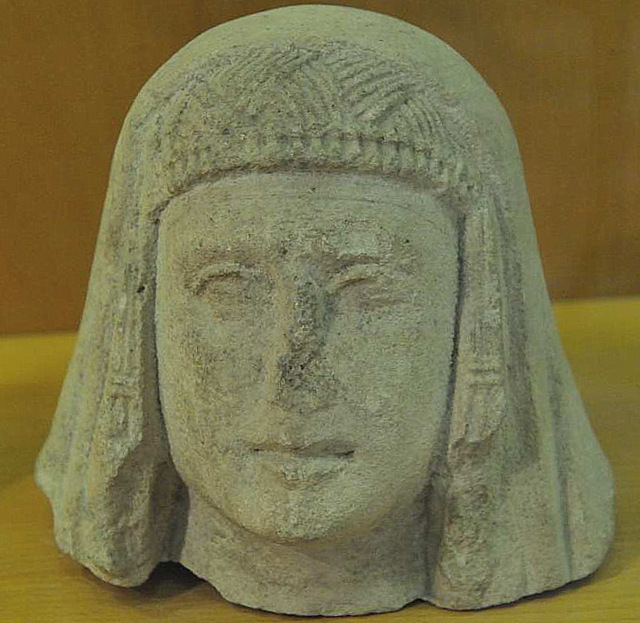 The Contestani are first referred to in about 300 BC, and eventually inhabited a wide area including parts of modern-day Albacete, Murcia, Valencia and Alicante.
The Contestani are first referred to in about 300 BC, and eventually inhabited a wide area including parts of modern-day Albacete, Murcia, Valencia and Alicante.
These written references come from the Greeks, who had first arrived in the Vega Baja del Segura in the 6th century BC, sailing up the river Thader (now known as the Segura which still runs through the hearts of Orihuela today) to reach inland areas. The Phoenicians followed not long afterwards, bringing with them the pottery kiln and the potter’s wheel, searching to gain commercial benefit from their territorial expansion and trading a wide variety of raw materials throughout the Mediterranean.
The Phoenicians originated in Lebanon, Palestine and Syria and traded throughout the Mediterranean from 1550BC to 350BC. Around 1200BC a great balance in power unsettled the ancient world and populations shifted, and during the subsequent 600 years the Phoenicians transferred into Egypt and then diffused throughout the Mediterranean in new settlements, often in the ports in which they had traded, a good number ending up in Carthage, where they blended into the melting pot of cultures in this African Port, the people from this port emerging with the new name of the "Carthaginians." From here, trade was controlled across the French, African and Spanish coasts, other Phoenicians settling in the trading colonies of these countries, gradually dispersing and losing their own identity as a nation.
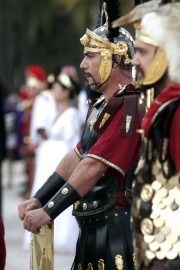 The Carthaginians, however, became a powerful nation, which lead them into conflict with Rome, intent on world domination.
The Carthaginians, however, became a powerful nation, which lead them into conflict with Rome, intent on world domination.
The Punic Wars took place between the Carthaginians and the Romans in the 3rd and 2nd centuries BC, and consisted of a power struggle for control of the Mediterranean. After the first Punic War (264-241 BC), Rome annexed Sicily and took control of Corsica and Sardinia, whilst the Carthaginians retreated towards the Iberian Peninsula( now Spain). Here they tried to win back some of their lost prestige and increase their economic resources by expanding their influence and control in the south of the peninsula.
This effectively comprised of occupying Iberian settlements, and assuming political domination, and General Hasdrubal’s coinage and currency were introduced in 223 BC in this area, occupied by the powerful Barca clan. It was also around this time that the first fortified structures were built in Orihuela on the curves of the River Segura.
In 218 BC, the Carthaginians broke their treaty signed with Rome after the first part of the Punic Wars not to cross the River Ebro, by attacking Sagunto, sparking off the Second Punic Wars and the Roman invasion of Qart Hadast ( later to become Cartagena) in 209BC.
The Romans named the structures in modern day Orihuela, Orcelis (and included it within the area of which Cartago Nova( the Roman name for Cartagena) was the capital city, the Provincia Cartaginense.
Latin thus became the language spoken here, and Roman customs and agricultural practices were institutionalized, taking over from those which had previously been prevalent.
After centuries of Roman domination, the mighty Roman Empire crumbled and split into 2: Eastern and Western Rome. With its capital in Constantinople, the Eastern part of the Empire assumed a new identity as the Byzantinians, but not before waves of Huns, Goths and Germanic Visigoths had swept down from Northern and Central Europe and taken over vast swathes of the former Roman Empire, including Hispania.
 The Byzantine Emperor Justinian attempted to reconquer the Spanish territories for the Byzantinians and briefly succeeded before the eventual conquest by the Visigoths, under the leadership of Suintila, in 625. They adapted the name of the city to Auriola, and made it the centre of one of their eight administrative departments within Hispania, which covered most of modern Spain.
The Byzantine Emperor Justinian attempted to reconquer the Spanish territories for the Byzantinians and briefly succeeded before the eventual conquest by the Visigoths, under the leadership of Suintila, in 625. They adapted the name of the city to Auriola, and made it the centre of one of their eight administrative departments within Hispania, which covered most of modern Spain.
The Pact of Tudmir (713) and Orihuela as an Arab city
Visigoth society in southern Spain was not an organized kingdom as we understand it, but was fractured into small areas ruled by local overlords, and this loose structure made it susceptible to organized threats from outside as well as internal squabbling.
The internal power struggles lead one ambitious Visigoth ruler to enlist the help of the Moors from Africa in his own bid for dominance, but the plan backfired and in 711 the Moors and Berbers invaded southern Spain and quickly conquered the area almost completely. In practically no time at all, the major population centres had either been overrun or had surrendered to the armed onslaught. Although the Moors were formidable fighters they preferred to allow their opponents to surrender, because this allowed them to achieve political power in a stable community in return for allowing the natives to carry on with their way of life to a large degree.
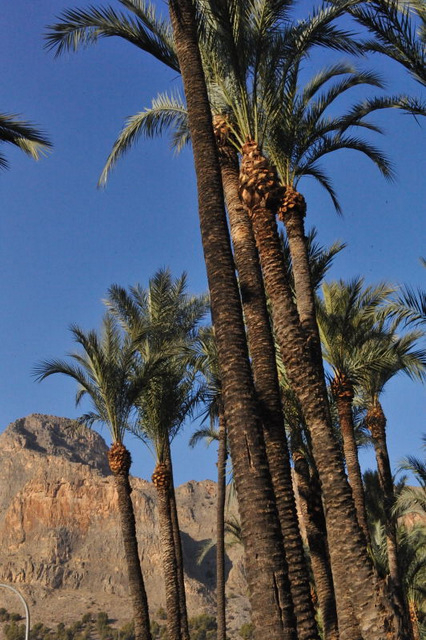 In this way the differences remained between Arabs, Berbers and recent converts to Islam, and most of the colonization of southern Spain was achieved through the signing of pacts between the invading forces and the invaded. One of the most famous of these pacts was the one signed by Tudmir (or Theodomir), who was the local Visigoth ruler, based in Auriola,( Orihuela), and Abd el Aziz, the son of the governor of Northern Africa.
In this way the differences remained between Arabs, Berbers and recent converts to Islam, and most of the colonization of southern Spain was achieved through the signing of pacts between the invading forces and the invaded. One of the most famous of these pacts was the one signed by Tudmir (or Theodomir), who was the local Visigoth ruler, based in Auriola,( Orihuela), and Abd el Aziz, the son of the governor of Northern Africa.
In order to force the invaders to the negotiating table local legend has it that Tudmir instructed women in the city to dress up as warriors and man the battlements, leading the Arabs to believe that the city’s defences were stronger than was actually the case. This was an inventive use of cross-dressing which was later to be repeated in the Armengola legend, concerning the ousting of the Moors 500 years later!
By the terms of the Pact of Tudmir the invaders agreed to respect the lifestyle, properties and Christian beliefs of the invaded people, while Tudmir promised to be faithful to the conquerors and to pay taxes to them, both at a personal level and on behalf of his subjects.
It is believed that the Pact of Tudmir was signed on 5th April 713, and the wide swathe of territory covered included the cities of Lorca, Mula, Orihuela, Alicante and Villena.
Tudmir and his successor managed to retain power for 2 generations until the area became a province of the kingdom of Al Andalús which was known as the Cora of Tudmir, and within it “Uryula” (Orihuela) was among the most important settlements: many even believe it to have been the capital of the territory, but unfortunately little documentation has survived and it has not been possible to prove or discount this notion.
In the ninth century, the Cora of Tudmir was absorbed into the Umayyad Caliphate, and then successively into other Arab provinces and kingdoms until the 13th century, constantly being passed back and forth between the Coras of Murcia and Valencia. This indecision as to whether the city ought to belong to one administrative territory or another was to be a constant thorn in the side of Orihuela for many centuries, its location within the area of Alicante not being finalized until the 19th century.
During this Arabic period, despite the frequent changes of political overlords, it seems from the little we know that Uryula became an advanced centre of Arabic culture. There were thermal baths, substantial city walls ( both of which can still be seen today in the Museum of La Muralla) and water wheels similar to the one which can still be seen in Los Desamparados today.
Another remnant from around a thousand years ago is the network of “acequias”, or irrigation ditches, criss-crossing the huerta, and it was almost certainly at this time that the widespread plantations of orange and lemon trees first began to define the countryside of the area. In addition, the Palmeral serves as another reminder of the five hundred years of Arab rule in the city and the surrounding area. The palmeral we see today survives from this period in almost the same format as 1000 years ago, being the second largest remaining palmeral in Spain.
Orihuela becomes a major Christian city
However, after 500 years of Moorish domination, the Christian forces of the Reconquist, spearheaded by the powerful Kingdoms of Castile y León and Aragón, gradually re-took Spain from the invaders, and on 17th July 1243 Castilian troops led by Prince Alfonso, who was later to become King Alfonso X (“The Wise”), entered the city and conquered it: the date of this event still celebrated as a holiday throughout the municipality.
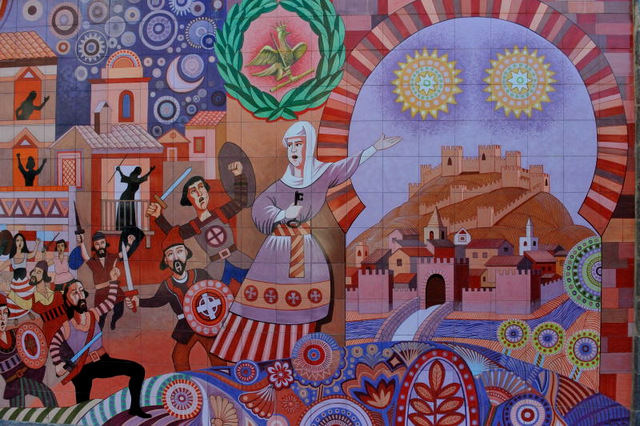 Again, the policy of peaceful surrender was adopted, the local Moorish ruler remaining in situ until 20 years later when a rebellion by the Moors, who were angry at the failure of Alfonso to respect the terms of the treaty rebelled, the rebellion undertaken in collaboration with Moorish settlements in other parts of the area including neighbouring Murcia, was quashed ruthlessly by the father –in-law of Alfonso, Jaime I of Aragón.
Again, the policy of peaceful surrender was adopted, the local Moorish ruler remaining in situ until 20 years later when a rebellion by the Moors, who were angry at the failure of Alfonso to respect the terms of the treaty rebelled, the rebellion undertaken in collaboration with Moorish settlements in other parts of the area including neighbouring Murcia, was quashed ruthlessly by the father –in-law of Alfonso, Jaime I of Aragón.
One version of the events surrounding the ousting of the Moors from local domination is that of the legend of La Armengola, the second time in Orihuela’s history that cross-dressing led to a crucial turning point in the city’s history. This time, though, it was men dressed in women’s clothing who played the key role in changing the future of their city. This story is played out every year in the annual moors and Christians Fiestas of the Reconquist in Orihuela.
It was probably in the years following the re-conquest of Orihuela that the city extended to the southern bank of the River Segura. The Moors who remained in the area were almost certainly forced to live outside the city walls, and although in the coming decades and centuries the splendor of the city was to be concentrated at the foot of the mountain on the north bank, a sizeable population became established on the flat land to the south.
In 1296 Orihuela paid homage to Jaime II of Aragón and was subsumed into the Kingdom of Valencia, under the control of Aragón, and by an Act of 1304 the city was awarded a special status with the right to vote in court. It was now a frontier town marking the border with the Kingdom of Castile, and as such was widely recognized as the second most important city in the Kingdom of Valencia.
This was truly the beginning of a Golden Age for Orihuela. It was a centre for important noblemen, military and religious leaders, attracting and generating both prestige and wealth. Work on many of the monuments which now adorn the city centre was started, including the Cathedral (on a site which had been occupied by a 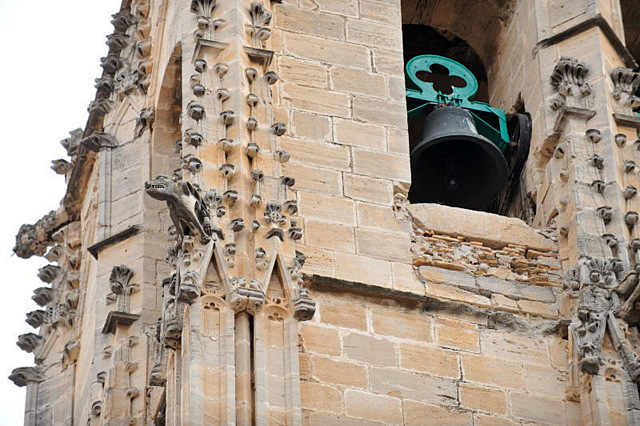 Mosque in the era before the Reconquista), the Palacio Episcopal, the church of Santa Justa and Santa Rufina,( the Gothic tower still remains today) the Mojones del Reyno, which still stand in Beniel to mark the old frontier between the kingdoms.
Mosque in the era before the Reconquista), the Palacio Episcopal, the church of Santa Justa and Santa Rufina,( the Gothic tower still remains today) the Mojones del Reyno, which still stand in Beniel to mark the old frontier between the kingdoms.
At this point in history, what later became Spain was a series of Kingdoms, and Orihuela was on the border between the Kingdom of Murcia, owned by Castile y León , and the Kingdom of Valencia, owned by Aragón, a position which put it in the firing line during the clashes for succession which followed the death of Alfonso X and lasted for approximately 200 years as the relatives of Castilian Alfonso and his wife Violante of Aragón fought amongst themselves.
During the War of the Two Pedros between the kings of Castile and Aragón in the second half of the 14th century, Pedro I (“The Cruel”) of Castile unsuccessfully attacked the castle in 1364, although he gained revenge and stormed it two years later. This success was short-lived, though, and Pedro IV (“The Ceremonious”) of Aragón re-took it not long afterwards. It was as a result of the support given to him by the people of the city that Pedro IV awarded Orihuela its motto, “Semper ensis vester prevaluit” (Your blade always prevailed).
Pedro incorporated Orihuela into the territory of Valencia, maintaining its status as a frontier territory in relation to its near neighbours in Murcia (which belonged to the kingdom of Castile) and bordered with Granada (the only Kingdom still under Arabic rule). This status served to increase the prestige and wealth associated with the leading families in the city, who were rewarded for remaining faithful to the Crown of Aragón and not defecting to the Castilian cause.
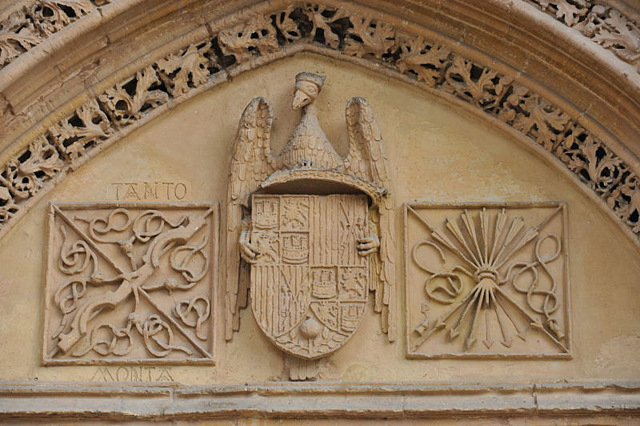 So great was the strategic importance of Orihuela at this time that Alfonso V finally declared it a city on 11th September 1437, and at the same time an agreement was reached in theory for the Diocese of Orihuela to be created. This plan was thwarted for the moment, though, and the churches of the city continued to be governed from Cartagena, although the Inquisition arrived in 1433 and Orihuela was widely influential in matters of religious administration and jurisdiction.
So great was the strategic importance of Orihuela at this time that Alfonso V finally declared it a city on 11th September 1437, and at the same time an agreement was reached in theory for the Diocese of Orihuela to be created. This plan was thwarted for the moment, though, and the churches of the city continued to be governed from Cartagena, although the Inquisition arrived in 1433 and Orihuela was widely influential in matters of religious administration and jurisdiction.
The last important act of the Middle Ages in Orihuela occurred in 1488, when the Catholic monarchs held court in the Iglesia de Monserrate prior to their campaign to complete the Reconquista by taking the city of Granada.
It was when this was achieved in 1492 that most historians choose to mark the divide between Spain’s medieval and modern periods. At this time there were about 10,000 inhabitants in Orihuela, three quarters of them Christians and the other 25% a mixture of Jews and Moriscos (converted Arabs). Until 1492 there had been a high level of religious tolerance, and the layout of the city’s streets was still essentially Moorish in nature, with narrow alleys in the area which remains the city centre today, but after the completion of the Reconquista the Moors were thrown out, not only in Orihuela, but also across Spain, an act which then sparked off the pirate attacks all along the Spanish coastline, but that’s another story altogether…..
At the dawn of a new era Orihuela was a thriving city with political, military, cultural and economic importance, but the “new age” was to bring mixed fortunes…
The Early Modern Period: a bright start followed by decline
In 1510 Pope Julius II granted Orihuela a Cathedral, making it the third in the diocese of Cartagena (alongside Cartagena itself and Murcia), but in spite of its importance the city was still not endowed with its own Diocese.
This was not achieved until 1564: until that point the city’s churches had come under the rule of the bishop of Cartagena, in what is now the Region of Murcia. Outside the Cathedral in Orihuela there is still a chain which marks the old border between Orihuela and the land belonging to the Diocese of Cartagena, and until 1564 it was not uncommon for crimes to be committed on the street corner by men who then hurriedly jumped over the chain and “into Murcia” to avoid arrest by no longer coming under the jurisdiction of the local authorities. The square is still sometimes referred to by locals as the “Plaza de la Cadena”.
When the status of Diocese was acquired the population celebrated, creating a series of traditions which are still observed in modern times, ( see the Bishop, the donkey and the Puerta de Olma) and even now Orihuela remains the Episcopal city of Alicante.
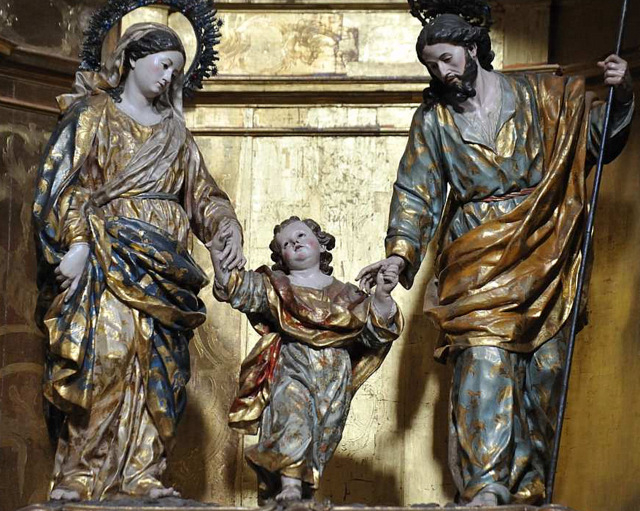 During the Revolt of the Brotherhoods in 1518 the city’s population rose up against Carlos I, defeating the Viceroy of Valencia and expelling noblemen from Orihuela. As a result, in 1521 the Viceroy split his army into two in order to attack from the north and the south simultaneously, joining forces with the King himself on the southern flank. In the ensuing Battle of Bonanza the guilds and brotherhoods suffered a conclusive defeat: the leaders of the uprising were brutally executed, and the city was sacked for thirty days. Other cities such as Elche and Alicante soon fell as the victorious army marched on to Valencia.
During the Revolt of the Brotherhoods in 1518 the city’s population rose up against Carlos I, defeating the Viceroy of Valencia and expelling noblemen from Orihuela. As a result, in 1521 the Viceroy split his army into two in order to attack from the north and the south simultaneously, joining forces with the King himself on the southern flank. In the ensuing Battle of Bonanza the guilds and brotherhoods suffered a conclusive defeat: the leaders of the uprising were brutally executed, and the city was sacked for thirty days. Other cities such as Elche and Alicante soon fell as the victorious army marched on to Valencia.
Culturally, Orihuela continued to advance. In 1610 the University was founded in the Colegio de Santo Domingo and in 1635 the first books were printed in the city. But darker times were just around the corner.
The first age of splendour of Orihuela declined from the mid-16th century onwards, due in large measure to the outbreaks of plague which decimated the population in 1648 and 1678 and decreasing agricultural production. After the outbreaks of plague Orihuela was repopulated mainly by immigrants from Castile, and Spanish became the main language of the city (rather than Valenciano).
This decline in importance was reflected by the start of a process which was to last for many years, by which the amount of land governed from the city was to become smaller and smaller. At the end of the 17th century the port of Guardamar del Segura was segregated, depriving Orihuela of the wealth generated by the trading activity based there. This marked the setting of a precedent, and as late as 1986 the process was still continuing with the segregation of Pilar de la Horadada.
The area was rapidly becoming poorer, and as a result the University’s faculty of Medicine was lost, but in the early 18th century the economy of the area experienced a significant upturn. This was due more than anything to the efforts of Cardinal Belluga, the visionary religious leader and statesman who led much of south-eastern Spain on the road to recovery at this time. He it was who encouraged the exploitation of the fertile soil of the river’s flood plain, laying the basis for much of Orihuela’s economic activity over the following centuries while at the same time bringing about its immediate economic and demographic expansion.
Much of this economic growth was due to the exports of silk, with silkworms thriving in the area’s white mulberry trees. On such humble foundations there grew a complete re-modelling of the city’s most impressive buildings: Convents such as the Agustinas, Clarisas and Trinidad were built, and the local nobility rebuilt their palaces in a style of grandeur, giving the city the monuments which still stand today such as the Palaces of the Marqués de Arneva, the Conde de la Granja, the Baronesa de Linde and the Conde de Luna. At the same time men such as Antonio de Villanueva and Francisco Salzillo were commissioned to supply the works of art which can still be seen in Orihuela’s main places of worship.
In the Wars of Spanish Succession at the start of the eighteenth century the city’s governor, the Marqués de Rafal, threw in his lot with Charles of Austria, ensuring that Orihuela ended up on the losing side. When his opponent Felipe of Borbón triumphed the city was sacked and lost its privileges. The Valenciano language completely disappeared from official documents.
During the conflict the city castle, up on the mountain where defence fortifications had existed ever since the age of the Visigoths, was struck by lightning and the gunpowder stored inside exploded, killing the unfortunate soldiers garrisoned in the castle and completely obliterating the castle itself.
 For a brief period after the war Orihuela was named by Felipe V capital of the Kingdom of Valencia, but at the behest of Cardinal Belluga this decision was soon reversed.
For a brief period after the war Orihuela was named by Felipe V capital of the Kingdom of Valencia, but at the behest of Cardinal Belluga this decision was soon reversed.
Form this point on decline set in once more: the castle had already been destroyed, and the city was not included in the new province of Alicante in 1737, leaving it out on a limb and, metaphorically speaking, in the middle of nowhere.
At the end of the century Torrevieja was segregated from Orihuela, causing the loss of the salt manufacturing installations on the lakes of La Mata and Orihuela, and the name of the latter was immediately altered to Torrevieja to reflect the change of ownership.
Just when it seemed things couldn’t get any worse, they did. In 1799 the province of Orihuela ceased to exist and the city came under the administration of Alicante. Napoleon then placed it in his “Department of the River Segura”, the capital of which was Murcia, and later on in 1822, after the end of the War of Independence, it passed into the province of Murcia.
In 1824 the University finally closed, and by this time the economy had been weakened by the loss of men in the years of fighting, while the area’s agricultural production had been exhausted by the need to feed troops and refugees. In 1833 Orihuela was returned to the province of Alicante.
From the 19th century onwards
In March 1829 the “Torrevieja earthquake” caused severe damage in the town: the tower of the Colegio de Santo Domingo collapsed partially (hence its unfinished appearance today), the last remains of the castle were destroyed and many inhabitants were killed or injured. On top of this, the population was further diminished and demoralized by a severe outbreak of cholera in 1834.
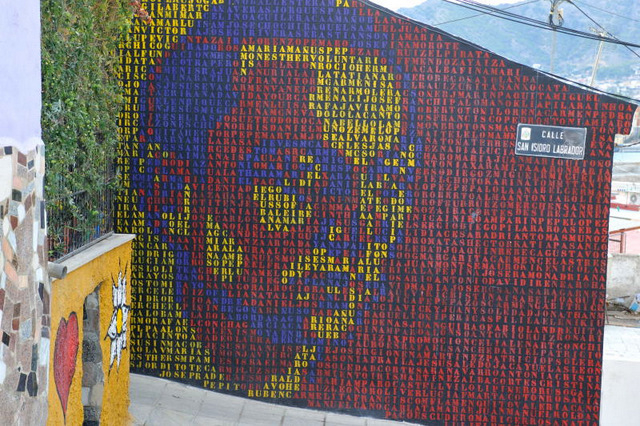 The loss of political importance and territorial control continued when the ecclesiastical authorities lost control of the towns of Bigastro and Redován, as well as other buildings which were bought by the Cathedral.
The loss of political importance and territorial control continued when the ecclesiastical authorities lost control of the towns of Bigastro and Redován, as well as other buildings which were bought by the Cathedral.
In the brief Cantonal Revolution of 1873 Antonete Gálvez took control of the city, defeating military governor Ruiz Piñero, whose forces consisted of only 51 men, in a battle which took place on 30th August. Thus was born the Canton of Orihuela, home to over 16,000 people, which lasted no more than a few weeks.
Only six years later the city was devastated by the flood known as the “Riada de Santa Teresa”, during which 300 people died and the damage done to buildings and crops was incalculable.
The industrial age could be said to have reached Orihuela in 1884, when the railway came to the city, an event which was celebrated by a visit from Cánovas de Castillo, national president at the time. But industrialization was slow to take hold on account of the rigid social structures which were in place until the mid -20th century, and the economic advance of Orihuela in the second half of the 19th century and the early 20th were due more to better use being made of the network of irrigation ditches which had been left by the Arabs over 600 years previously.
In the 20th and 21st centuries Orihuela has again recovered some of its past importance, gaining recognition thanks to the works of poet Miguel Hernández, the visit of King Alfonso XIII and the arrival of democracy after Franco’s death in 1975.
From the late 1960s onwards the coastal areas began to attract large numbers of holiday-makers, and on the back of this the municipality has grown exponentially in the first decade of the 21st century.
Nowadays the population is over 90,000, and almost half are non-Spanish. There are more British people living here than in any other municipality in Spain, and the internationalization offers increased opportunities for businesses engaged in tourism activity. The coastal areas have been transformed into major centres of international tourism, and the old city retains its important historical heritage, with an impressive array of historical monuments and characterful plazas, museums and public areas which are all well worth visiting.















